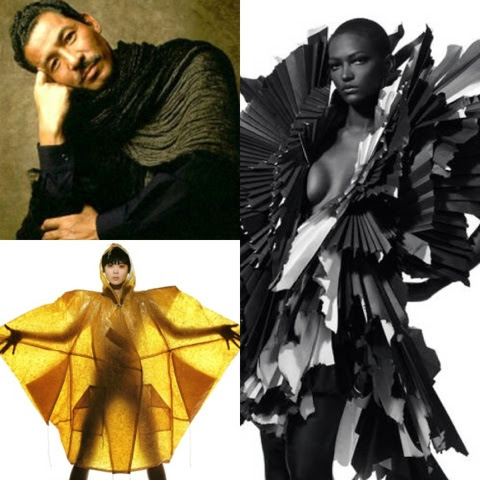Search This Blog
TALK FASHION ARCHIVE
Saturday, May 31, 2014
To be fashionable or to be Superficial, thats is the question.
Thursday, May 29, 2014
5 Ways to Finding Your Fashion Voice
Wednesday, May 28, 2014
The Many Faces of CARA DELEVIGNE
"I don't know — I have no idea. I haven't really had time to take anything in. I think when I stop and think about it, it just confuses me more and more. I can't really process it all that quickly."
Tuesday, May 27, 2014
Monday, May 26, 2014
JAPAN: Top 5 Must Know Fashion Designers
5 years later, he opened a boutique in Paris selling his own designs. The shop was located on Galerie Vivienne, far from the rarefied bastions of the haute couture, and its clothes capturing the joyful spirit of a multicultural world.
He borrowed ethnic gestures from all over the world, African boubous, Vietnamese ao dai tunics, Nehru jackets, and Austrian dirndls. He would combine these ideas and created head-turning creations.
“I feel sad to think that human hands are atrophying as so many things are made by computer. I make clothes for people who will cherish them.” -Hanae Mori
Hanae Mori is the only Japanese woman to have presented her collections on the runways of Paris and New York. She is also the first Asian woman to be admitted as an official haute couture design house by the federation francaise de la couture in France. She is also the most honored female designer in Japan. Being one of the first women to have a career in fashion in Japan, she is widely regarded as an icon of liberated women.[
Watanabe's creations are not ever targeted to a specific woman, or inspired by a singular theme, but instead is driven by a feeling.
“I always start from zero each season,” “to create an interesting form. . . . [It’s] more a question of feeling.” -Junya Watanabe
Watanabe’s real concern with each collection is to ask and answer a question. His fashion does not reek with nostalgia and yet maintains true to the past. Always growing with the times, his designs are technologically graphic, and innovative.
Sunday, May 25, 2014
John Paul Gaultier: Pain Couture Exhibition
Video is in French:
Saturday, May 24, 2014
FRANCE: Top 5 Fashion Designers
Friday, May 23, 2014
Spring TUTU Trend: Hot or Not?
-
Do you have your own personal style? A style that is distinctively you? Following trends, and copying your icons is a safe way to always loo...
-
I don't know about you guys, but where I live, the past couple of days have been so hot people are literally passing out from dehydratio...
-
Unless you live under a rock, you have heard about the public outrage over Kim Kardashian and Kanye West cov...



























































